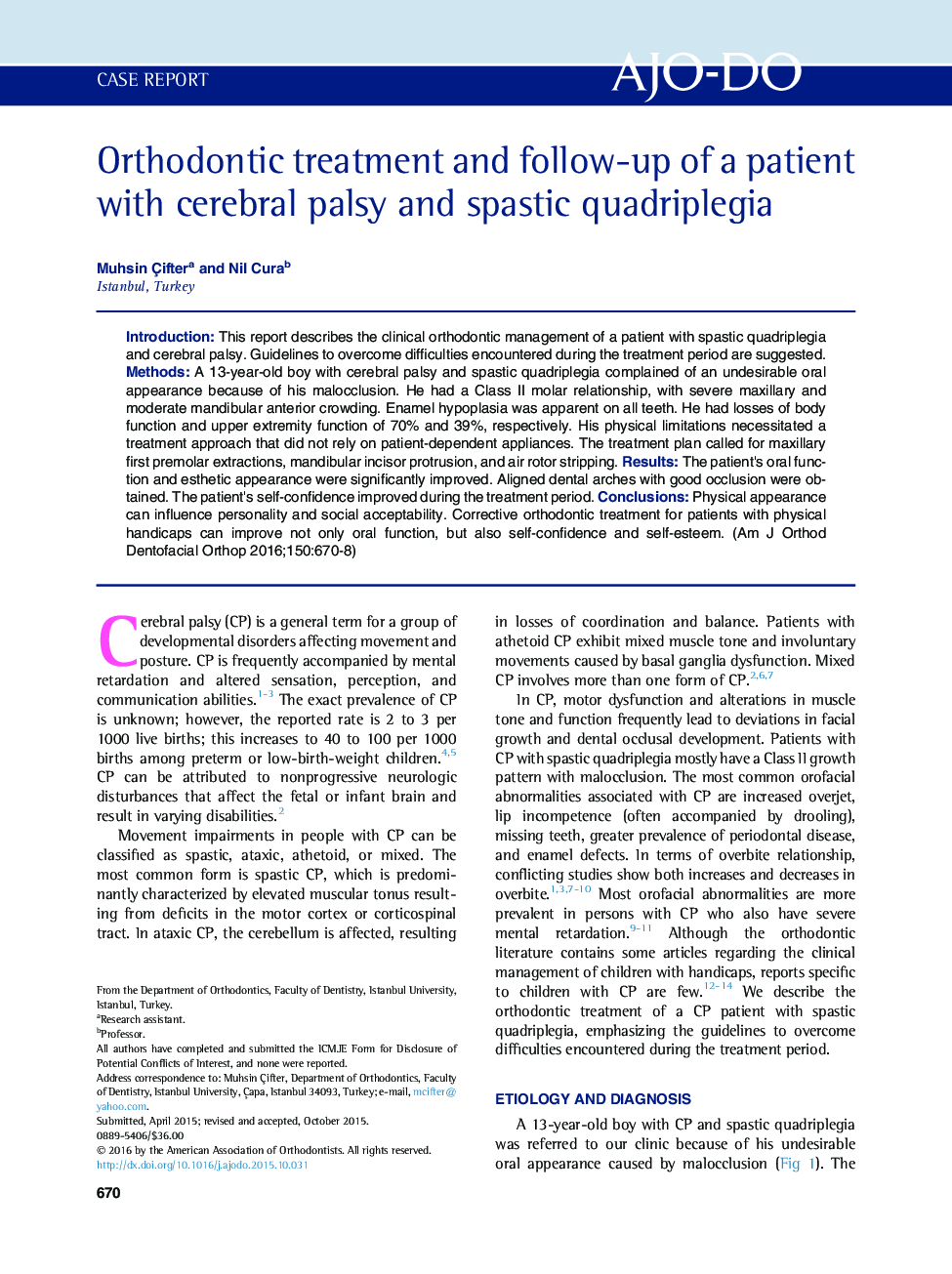| Article ID | Journal | Published Year | Pages | File Type |
|---|---|---|---|---|
| 5637803 | American Journal of Orthodontics and Dentofacial Orthopedics | 2016 | 9 Pages |
â¢Orthodontic treatment for a boy with quadriplegia and cerebral palsy is reported.â¢Oral function and esthetic appearance were significantly improved.â¢Treatment emphasized appliances that minimize reliance on patient compliance.
IntroductionThis report describes the clinical orthodontic management of a patient with spastic quadriplegia and cerebral palsy. Guidelines to overcome difficulties encountered during the treatment period are suggested.MethodsA 13-year-old boy with cerebral palsy and spastic quadriplegia complained of an undesirable oral appearance because of his malocclusion. He had a Class II molar relationship, with severe maxillary and moderate mandibular anterior crowding. Enamel hypoplasia was apparent on all teeth. He had losses of body function and upper extremity function of 70% and 39%, respectively. His physical limitations necessitated a treatment approach that did not rely on patient-dependent appliances. The treatment plan called for maxillary first premolar extractions, mandibular incisor protrusion, and air rotor stripping.ResultsThe patient's oral function and esthetic appearance were significantly improved. Aligned dental arches with good occlusion were obtained. The patient's self-confidence improved during the treatment period.ConclusionsPhysical appearance can influence personality and social acceptability. Corrective orthodontic treatment for patients with physical handicaps can improve not only oral function, but also self-confidence and self-esteem.
